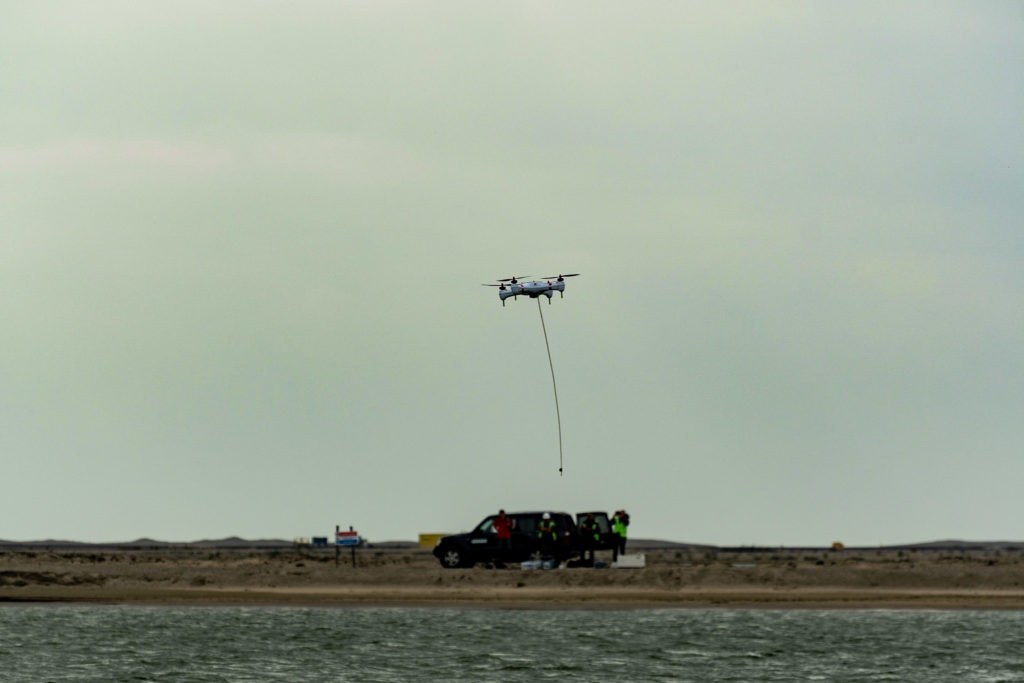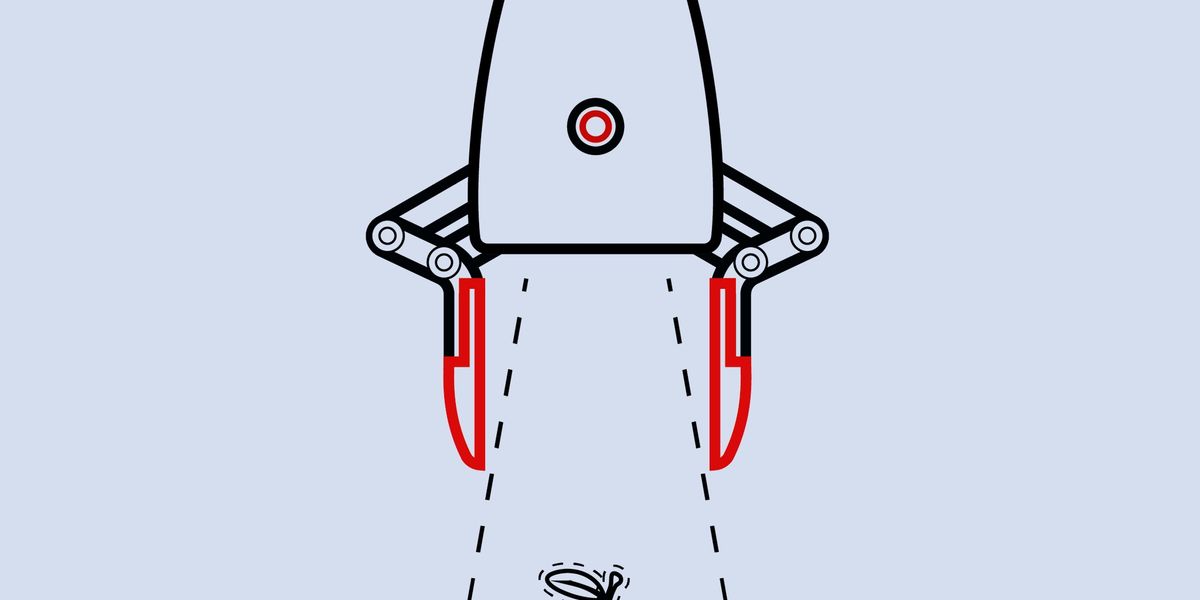Install the app
How to install the app on iOS
Follow along with the video below to see how to install our site as a web app on your home screen.
Note: This feature may not be available in some browsers.
You are using an out of date browser. It may not display this or other websites correctly.
You should upgrade or use an alternative browser.
You should upgrade or use an alternative browser.
UAV / UCAV / LAR (robotit) Uutiset ja jutut
- Viestiketjun aloittaja Raveni
- Aloitus PVM
https://www.theregister.co.uk/2019/08/29/wk050_full_daib_crash_report_aberporth/The latest British Army Watchkeeper drone crash happened because its crew became fixated on live footage from an onboard camera instead of their instruments, a Ministry of Defence report has revealed.
An internal Defence Accident Investigation Branch (DAIB) report detailed why the semi-autonomous aircraft, tail number WK050 and flown on the day by two Royal Artillery operators, crashed in June 2018.
The report, dated February 2019, was published online by the MoD after the BBC made a Freedom of Information request for it, leading to news reports over the past few weeks.
WK050 flopped into a tree just beyond the runway of Aberporth airport on the Welsh coast after its Army operators, under the supervision of contractors from a Thales joint venture company, cut its throttle immediately after the drone had landed and lifted off again.
"Had no action been taken, the [Watchkeeper] would have completed its automatic go-around from which it could have been commanded to conduct a further approach," said the DAIB in its Safety Investigation Report, which was written by a major and a Warrant Officer 1 (WO1).
That report revealed that the Watchkeeper's operators were focused on a screen showing output from an onboard camera instead of their air vehicle display computer, used for monitoring the drone and its onboard software's decision-making. The camera was part of the drone's surveillance payload and had been retracted to its stowed position, facing backwards and downwards but still transmitting footage, immediately before landing.
The camera was not part of the flight control suite. Nonetheless, the DAIB found that the monochrome pictures it was sending the crew were "compelling" against the actual control display.



Pohjolan olosuhteet pistävät akut ja roottorit tiukoille – Jäätävän tuulitunnelin testit todistavat: Dronen suorituskyky tippuu dramaattisesti jo muutamassa pakkasasteessa

 www.tekniikkatalous.fi
www.tekniikkatalous.fi

Kuluvalla viikolla ympäri pääkaupunkiseutua on suoritettu lukuisia drone-testejä Ultrahackin järjestämässä Drone Tournamentissa.
Myös Otaniemessä VTT:n tutkimustiloissa järjestettiin Suomen olosuhteisiin sopiva kilpailu, jossa joukkueet testasivat pienoiskopteriensa kestävyyttä jäätävässä tuulitunnelissa. Testeissä kylmähuoneen lämpötila laskettiin -5 pakkasasteeseen ja tuulitunnelista puhalsi puhuri 10 metrin sekuntivauhdilla.
Lisäksi simulaatioon lisättiin pilvipisarat, jotka ovat kaikille lentäville aluksille vaikea olosuhde.
”Dronen akunkesto on ongelma ja pullonkaula niiden hyödyntämisessä. Yleensä akut kestävät kesäkelillä pisimmillään noin tunnin. Pidempiin operaatioihin tarvitaan esimerkiksi hybridi-drone, eli polttomoottorin apu. Hybridit ovat kuitenkin vielä isokokoisia ja äänekkäitä”, VTT:n autonomisten järjestelmien ekosysteemikoordinaattori Hannu Karvonen sanoo.
Suomessa pienoiskopterit ovat ympärivuotisessa käytössä muun muassa poliisilla, joka on tällä hetkellä Suomen suurin droneoperaattori. Talvisissa olosuhteissa kaupan hyllyltä saatavat pienoiskopteri hyytyvät nopeasti, minkä vuoksi lennätettävää suurimman akunkeston tarjoavaa dronea tai akkuja on vaihdettava tiuhaan, jopa varttitunnin välein.
VTT:n järjestämissä testeissä dronejen suorituskykyä testattiin kahdella erilaisella kokeella. Ensimmäisessä dronen akku ajettiin loppuun huoneenlämmössä. Tämän jälkeen vastaava koe suoritettiin kylmähuoneessa. Huoneenlämmön ja kylmähuoneen välisen käyntiajan erotuksen perusteella valittiin testin voittaja.
Toisessa kokeessa testattiin, kuinka nopeasti -5 celsiusasteen pakkanen ja pilvipisarat laskevat dronen nostovoimaa 80 prosenttiin täydestä nostovoimasta. Useimmiten nostovoima tippui 80 prosenttiin vain muutamassa minuutissa.
Jäätävät olosuhteet kosteassa pakkasilmassa laskevat pienoiskopterin suorituskykyä nopeasti. Kylmässä ja kuivassa pakkasilmassa lämpiävillä akuilla varustettu drone kykenee lähes samanlaiseen suorituskykyyn kuin lämpimässä ilmanalassa, Karvonen sanoo.
”Pilviolosuhteet, jäätävä tihku tai jäätävä sade ja muutama pakkasaste aiheuttavat hankalimmat olosuhteet.”
Ratkaisua jäätävän tihkun ja pakkasen aiheuttamiin suorituskyvyn alentumisiin etsitään muun muassa erilaisista pinnoitteista, lämpiävistä akuista, akun lämmön johtamisesta roottorin lapoihin tai esimerkiksi lämpöä roottoreihin ohjaavista johtimista.
”Myös polttokennot tekevät tuloaan droneihin”, Karvonen sanoo.
VTT on aiemmin hyödyntänyt jäätävää tuulitunnelia muun muassa tuulivoimaloiden lapojen ja ajoneuvojen testaamiseen. Maailmalla pienoiskopterien ja lennokkien testaaminen ja kehittäminen jäätäviin olosuhteisiin on vielä vähäistä.
VTT:ssä nähdään, että pienoiskopterien ja lennokkien kylmäkestävyydestä on muodostumassa merkittävä tutkimuskohde. Suomessa ollaan liikkeellä ensimmäisten joukossa.
”Kyllä tässä käsittääkseni aika lailla ensimmäisiä maailmassa ollaan, jotka dronen kylmäkestävyyttä testaavat. Uskon, että kiinnostus tutkimusta kohtaan lisääntyy, kun droneja halutaan hyödyntää esimerkiksi arktisilla alueilla”, Karvonen toteaa.
Pohjolan olosuhteet pistävät akut ja roottorit tiukoille – Jäätävän tuulitunnelin testit todistavat: Dronen suorituskyky tippuu dramaattisesti jo muutamassa pakkasasteessa
Hankalimmat olosuhteet dronelle syntyvät muutamassa pakkasasteessa ja kosteassa ilmanalassa.

Drone Tournament by Ultrahack
www.dronetournament.org
Viimeksi muokattu:
https://spectrum.ieee.org/automaton...materials-for-robots-that-cannot-be-destroyedIf there’s one thing we know about robots, it’s that they break. They break, like, literally all the time. The software breaks. The hardware breaks. The bits that you think could never, ever, ever possibly break end up breaking just when you need them not to break the most, and then you have to try to explain what happened to your advisor who’s been standing there watching your robot fail and then stay up all night fixing the thing that seriously was not supposed to break.
While most of this is just a fundamental characteristic of robots that can’t be helped, the European Commission is funding a project called SHERO (Self HEaling soft RObotics) to try and solve at least some of those physical robot breaking problems through the use of structural materials that can autonomously heal themselves over and over again.
Maksaisin mielelläni robotista joka kestää, kuin robotista jota pitää vaihtaa uusien mallistojen tullessa kuvaan.

Ghost Robotics | Robots That Feel the World
From the battlefield to the oil field, Ghost Robotics empowers defense and commercial teams with cutting-edge solutions for the most critical missions.
 www.ghostrobotics.io
www.ghostrobotics.io

Engineering Product Development (EPD)
The curriculum of the EPD pillar prepares students for leadership in the conception, design, implementation, and operation of innovative technology-intensive products, with emphasis on products whose development cuts across traditional disciplinary boundaries. The product sectors currently...
epd.sutd.edu.sg
Tekijä tietää että näiden kanssa on olemassa moraalisia kysymyksiä, Tietyn autonomia pisteen jälkeen nämä on meidän aikakauden terminaattoreita. Teoriassa tämä teknologia voitaisiin asentaan pitkän matkan puikkoon ja päästää se valloilleen vihollistontilla. 227 mm puikossa luulisi olevan tilaa kahdelle taikka kolmelle tuhoojadronelle.


https://spectrum.ieee.org/automaton...r-jet-powered-drone-takes-off-with-explosionsAt ICRA 2015, the Aerial Robotics Lab at the Imperial College London presented a concept for a multimodal flying swimming robot called AquaMAV. The really difficult thing about a flying and swimming robot isn’t so much the transition from the first to the second, since you can manage that even if your robot is completely dead (thanks to gravity), but rather the other way: going from water to air, ideally in a stable and repetitive way. The AquaMAV concept solved this by basically just applying as much concentrated power as possible to the problem, using a jet thruster to hurl the robot out of the water with quite a bit of velocity to spare.
In a paper appearing in Science Robotics this week, the roboticists behind AquaMAV present a fully operational robot that uses a solid-fuel powered chemical reaction to generate an explosion that powers the robot into the air.
The 2015 version of AquaMAV, which was mostly just some very vintage-looking computer renderings and a little bit of hardware, used a small cylinder of CO2 to power its water jet thruster. This worked pretty well, but the mass and complexity of the storage and release mechanism for the compressed gas wasn’t all that practical for a flying robot designed for long-term autonomy. It’s a familiar challenge, especially for pneumatically powered soft robots—how do you efficiently generate gas on-demand, especially if you need a lot of pressure all at once?
rty19
Greatest Leader
Miehittämätön Schiebel-helikopteri UAS operoi Rajavartiolaitoksen ulkovartiolaivalta | lentoposti.fi
Miehittämätön itävaltalainen Schiebel Camcopter S-100 -helikopteri on tehnyt sarjan koelentoja Rajavartiolaitoksen ulkovartiolaiva Turvalta. Viisi päivää kestäneet testit liittyvät Valvonta 2 -hankkeeseen, johon on saatu rahoitusta European Maritime and Fisheries Fund -rahastolta.
University of Bonn, Computer Science VI, Autonomous Intelligent Systems
www.ais.uni-bonn.de

China's High-Speed Drone Is Rocket-Powered And All About Doing What Satellites Can't
The aircraft is designed to rapidly gather intel in contested areas by surprise and especially when key satellites are no longer operational.
No niin, ensimmäinen tunkeutumiskykyinen drooni julki - rakettikäyttöinen Kiinan WZ-8. Tuon tapainen toimisi ehkä tulevaisuudessa maasta laukaistavana uudelleenkäytettävän kiihdytysvaiheen kera (a la Space X) ehkä myös torjuntahävittäjänä - kunhan laskeutuisi pystysuoraan tai esim. liitovarjon avulla.
rty19
Greatest Leader
Kiina esitteli myös tällaisen pienoissukellusveneen

 www.forbes.com
www.forbes.com

China Navy Reveals New Large Underwater Robot Which Could Be A Game Changer
Chinese weapons are throwing off their historic reputation of being mere copies of other country's designs. Case in point: its first large displacement autonomous underwater vehicle, which came out of hiding this morning.
 www.forbes.com
www.forbes.com

China's High-Speed Drone Is Rocket-Powered And All About Doing What Satellites Can't
The aircraft is designed to rapidly gather intel in contested areas by surprise and especially when key satellites are no longer operational.www.thedrive.com
No niin, ensimmäinen tunkeutumiskykyinen drooni julki - rakettikäyttöinen Kiinan WZ-8. Tuon tapainen toimisi ehkä tulevaisuudessa maasta laukaistavana uudelleenkäytettävän kiihdytysvaiheen kera (a la Space X) ehkä myös torjuntahävittäjänä - kunhan laskeutuisi pystysuoraan tai esim. liitovarjon avulla.
Taitaa olla pellistä kasattu malli toi ? ainakii näyttää et siel ois järkytävän näköistä hitsijälkeä parissa kohassa ?

CAST

Pelican drone ensures super quick water sampling - MAVLab
researchers from TU Delft have developed a 'pelican drone’: a drone capable of taking water samples quickly, in combination with a measuring instrument that immediately analyses the water quality.
 mavlab.tudelft.nl
mavlab.tudelft.nl
Autonomous robots are coming around slowly. We already got autonomous vacuum cleaners, autonomous lawn mowers, toys that bleep and blink, and (maybe) soon autonomous cars. Yet, generation after generation, we keep waiting for the robots that we all know from movies and TV shows. Instead, businesses seem to get farther and farther away from the robots that are able to do a large variety of tasks using general-purpose, human anatomy-inspired hardware.
Although these are the droids we have been looking for, anything that came close, such as Willow Garage’s PR2 or Rethink Robotics’ Baxter has bitten the dust. With building a robotic company being particularly hard, compounding business risk with technological risk, the trend goes from selling robots to selling actual services like mowing your lawn, provide taxi rides, fulfilling retail orders, or picking strawberries by the pound. Unfortunately for fans of R2-D2 and C-3PO, these kind of business models emphasize specialized, room- or fridge-sized hardware that is optimized for one very specific task, but does not contribute to a general-purpose robotic platform.
We have actually seen something very similar in the personal computer (PC) industry. In the 1950s, even though computers could be as big as an entire room and were only available to a selected few, the public already had a good idea of what computers would look like. A long list of fictional computers started to populate mainstream entertainment during that time. In a 1962 New York Times article titled “Pocket Computer to Replace Shopping List,” visionary scientist John Mauchly stated that “there is no reason to suppose the average boy or girl cannot be master of a personal computer.”

From Mainframes to PCs: What Robot Startups Can Learn From the Computer Revolution
In their search for killer apps, robotics companies should look at the amazing evolution of computers
 spectrum.ieee.org
spectrum.ieee.org
Jos on kykyä niin elä pelkää, kehitä ja ole mukana sillä autonomian takana on massiiviset rahavirrat, mutta ole varuillasi moraalisista ongelmista mitä tulee aivan varmasti matkan varrella.
https://www.theregister.co.uk/2019/10/09/airbus_zephyr_drone_second_crash_australia/A second Airbus Zephyr high altitude pseudo-satellite (HAPS) drone, built for the UK's Ministry of Defence, has crashed in Australia while on a test flight.
The 25m-wingspan aircraft reportedly crashed after encountering turbulence, according to a local news story.
It was being flown from Wyndham, a remote airstrip in a northerly part of Western Australia that lies around 442km (275 miles) southwest of Darwin. The crash was said to have happened on 28 September during routine flying.
With the Zephyr being a noticeably light and fragile craft, northern Australia's predictable climate (hot, dry, sunny, generally calm winds) gives a much better chance of carrying out useful test flights without seeing the weather destroying the aircraft. Indeed, Airbus probably ought to be giving lessons to the British Army and Thales on weather conditions suitable for flying unmanned aircraft.
Nuo ovat todella kevytrakenteisia laitteita ja eivät kyllä kestä edes keskikovaan turbulenssia. Jatkuva teho on vain 0.3kW, jolla härveli liitää eteenpäin.
rty19
Greatest Leader

Turkki kehittää autonomisia tappaja-droneja – pelottava ase hyökkää parvena ilmasta
Turkin asevoimilla on kotimaassa kehitettyjä, tekoälyn ohjaamia kamikaze-lentolaitteita, joita sen uskotaan ottavan käyttöön sotatoimissaan Syyriassa.
http://www.spacedaily.com/reports/A..._effective_on_the_future_battlefield_999.htmlIn an effort to make robots more effective and versatile teammates for Soldiers in combat, Army researchers are on a mission to understand the value of the molecular living functionality of muscle, and the fundamental mechanics that would need to be replicated in order to artificially achieve the capabilities arising from the proteins responsible for muscle contraction.
Bionanomotors, like myosins that move along actin networks, are responsible for most methods of motion in all life forms. Thus, the development of artificial nanomotors could be game-changing in the field of robotics research.
Researchers from the U.S. Army Combat Capabilities Development Command's Army Research Laboratory have been looking to identify a design that would allow the artificial nanomotor to take advantage of Brownian motion, the property of particles to agitatedly move simply because they are warm.
The CCDC ARL researchers believe understanding and developing these fundamental mechanics are a necessary foundational step toward making informed decisions on the viability of new directions in robotics involving the blending of synthetic biology, robotics, and dynamics and controls engineering.
The Journal of Biomechanical Engineering recently featured their research.
"By controlling the stiffness of different geometrical features of a simple lever-arm design, we found that we could use Brownian motion to make the nanomotor more capable of reaching desirable positions for creating linear motion," said Dean Culver, a researcher in CCDC ARL's Vehicle Technology Directorate. "This nano-scale feature translates to more energetically efficient actuation at a macro scale, meaning robots that can do more for the warfighter over a longer amount of time."
